 The play instinct in dogs is a sign of interaction with the environment and a feature that denotes its level of intelligence far above that of many other animals. The person must activate and develop the intelligence to the health of your pet and a great satisfaction for the bond with your dog. Because of its importance, the choice of toy to acquire a pet is not a trivial matter .
The play instinct in dogs is a sign of interaction with the environment and a feature that denotes its level of intelligence far above that of many other animals. The person must activate and develop the intelligence to the health of your pet and a great satisfaction for the bond with your dog. Because of its importance, the choice of toy to acquire a pet is not a trivial matter .
Keep in mind that the game is the first link of interaction between dog and person. According to Javier Peral, Trixie Director General of Spain, "a pet owner must use the game as an activity essential to maintain active and developing understanding of the animal . " As for children, not all toys are suitable for all ages and characteristics of dogs. Javier Peral tells about "the person in charge of the animal should stop and think what the toy appropriate for your pet. "
The most appropriate toy for your dog
By Aidan Connell
Category:
dog toys
1 comments
Vitamins and Minerals
By Aidan Connell
We know that vitamins, such organic compounds needed by the body to biochemical processes are essential for both human and animal life. In this article we will discuss the concepts and myths needs or wants that our dogs may have, but as always we will start by a smattering of what we are and what they are worth. First, that there are two classifications. The soluble (A, D, E and K) and water soluble (B and C). The first is stored in fat cells of the body, while the latter are not retained in the body except in small amounts. Hence, although excessive intake necessary storage can result in body fat that can be toxic, especially A and D. Vitamin A (retinol). Important to behold. Its deficiency can cause growth retardation, hair and skin problems and reproductive rights. In puppies can cause hydrocephalus and cleft palate. Vitamin D (calciferol). Important for bones because it intervenes in the balance of calcium and phosphorus in the blood. Apart from ingest through diet is obtained by conversion of a molecule called ergosterol, with the help of sunlight. Vitamin E (tocopherol) . Plays an important role in forming cell membranes, cell respiration and metabolism of fats. It is also well known for his role as an antioxidant and typically include many feeds it as a natural antioxidant. Vitamin K. The body synthesizes it. It affects blood clotting. Helpful to know precisely rodenticides affect the clotting factors so treatment in case of accidental ingestion by the dog will be supplying a dose of vitamin K1 shock. Vitamin C. Very used as a dietary supplement canine . By intervening directly in the mineralization of bone is used to prevent hip dysplasia. However there is no scientific results to support this theory. Even if you've seen that can be effective in pain that this disease will generate. It is also used to prevent urinary stone formation and which acidifies the urine. Vitamin B1 (thiamine). Loss of appetite, weakness, loss of reflexes and nervous control and eventually death. Vitamin B2 (riboflavin). Essential for the proper development of hair, muscle and growth. Vitamin B3 (niacin). Help the proper functioning of enzymes. Its deficiency causes "black tongue" in dogs and cats, and is characterized by weight loss, gums, lips and inner cheeks swollen and red. In severe cases, bloody diarrhea and death. Vitamin B5 (pantothenic acid). helps produce energy from carbohydrates, fats and proteins. Its lack causes hair loss, diarrhea and gastric disorders. It has also been associated with abnormal graying dogs, much more noticeable in dogs black. Vitamin B6 (pyridoxine). It helps the body use amino acids, so it is absolutely essential. Its absence can cause cavities in teeth or skin lesions. Vitamin B9 (folic acid) and B12 (cyano cobalamin). They work in harmony to produce new red blood cells and proteins. Folic acid helps prevent birth defects in fetuses, such as spina bifida or cleft palate. Hence, many breeders opt for a future supplement with folic acid pregnant females from the heat and during pregnancy. Minerals. inorganic elements are involved in many body functions such as the formation of bone and cartilage, keeping the acid / base, muscle and nerve function and hormone production. They are grouped into two categories: macrominerals. are needed in greater amounts (calcium, phosphorus, magnesium, potassium, sodium and chloride). Microminerals (trace elements), required in trace amounts (copper, iodine, iron, manganese, selenium and zinc). Should be contributed to the diet in proper proportions to meet needs and because some have toxic excesses. The calcium and phosphorus should maintain a relationship of 1:1 (the same amount of calcium and phosphorus) or 2:1 (double calcium ) so that no problems depending on the animal's life stage. As a special case in Alaskan Malamutes , Huskies and crosses read both observed a greater need for zinc in the diet or those at risk of developing a zinc deficiency dermatosis, manifested in a loss of hair and scaly skin especially on face, head and legs. The puppies may have also anorexia, lethargy and susceptibility to infection less important. This is apparently due to a poor absorption of zinc, which worsens during times of stress (sled dogs in season of work) or a diet based on plant ingredients or high calcium content. In this world of vitamins related to a number of myths that are not correct but we accept that as valid. For example, fiber can lose weight safely. Or that regulate the rate of food in the gut, if we consume more than they should or we overdo it, we will evacuate so quickly that we will not give your body time to assimilate the necessary nutrients that give us food, which will eventually shortcomings. All this is false . Another one would be that the calcium pills help grow and to strengthen the bone. It is also false. Puppies do not have any mechanism to keep out excess calcium, an extra supply will cause an imbalance may even degrade the skeletal system. Turn hampers the absorption of magnesium and zinc, which will become deficient in the body, but through our daily intake of foods that we give the dog is correct. We must be clear that if our friend receives a diet feed of good quality do not have to give an extra intake of any nutrient will not need it. The more vitamins better. False. An excess may cause more problems than benefits. There are some like the B complex or vitamin C is excreted in the urine. But not so with the groups that dissolve in fat (A, D, E, K), the excess will accumulate in the fatty deposits that the body has reserve and can reach toxic levels for the body. We must not get carried away by what they say and try to remedy the problems of our fellow appropriate consultations with our vet. In the winter there to supplement the diet. False. It is true that dogs in cold weather require more energy, because with the cold the body requires more "fuel" to keep its internal temperature without risk and cope with adverse weather. However, this extra contribution should not provide in the form of capsules, pills or tablets without food. Ideally, give an extra helping of plans to increase roughly in the proportion of ¼ of the dose that you give daily. Or change the feed to one that will bring more nutrients. Will notice improvement in the vitality, hair, muscle ... But beware, this applies to dogs living abroad, who have a life more bearable in heated homes will not need this extra contribution or may not be that any other illness can cause or recommended by a veterinarian. During lactation, the mother needs extra vitamins and minerals. True. During pregnancy, nutrient inputs to the formation and development of the fetus is the greatest so a greater quality food intake is highly recommended. The same applies to nursing. Otherwise we can rest assured that if a healthy dog will not need anything else, just the daily care they dispense. Montse Arias Perros.com Writing
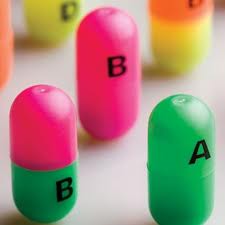
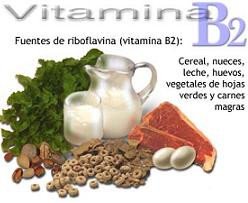

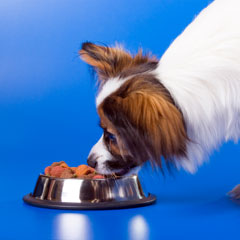
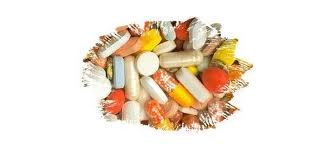
Category:
0
comments
Dogs and Cats
By Aidan Connell
Although different, so that dogs and cats are bad today is more myth than reality. But we must not forget that nature is predatory and 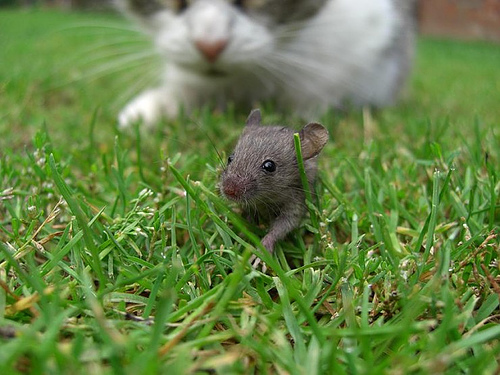 their hunting instinct, everything inside pulls them to chase other animals. It is not the first time we see coincided like a cat chasing a mouse, bird, fly ... and that the dogs do the same with cats. Its genetic blueprint tells them is a potential prey that they must pursue to survive, being a clear source of food. In carnivores, especially cats that are almost exclusively, this survival is based on predation. So it is as natural as a habitual behavior. It will be harder to remove that instinct to cats than dogs but we can control through games, bearing in mind that we encourage them all to wake up that instinct. There are countries like Switzerland or Australia where there is a "curfew" for the cats hunting at regular times in which they are forbidden by law to their owners allow them outside the exits. But the issue! These two species can be viewed with suspicion because they are different, but each arises a natural interest. The misunderstanding each other can be the engine of their relationship, but they are pets has helped to change and soften these patterns. In turn, the proximity of man, caused a lower density of predators that may have increased the chances of success in reproduction and survival of individuals. This is the most likely cause for the explanation of why domestic predators properly socialized with humans or other pets are fleeing not only them but also can search company. If accustomed from puppies to each other's presence, ie the properly socialize and educate them to live together, the mutual adjustment easier. Assume that there is no need to hunt to survive and that their relationship with other species may be different. Since puppies learn from their parents and peers and of course the surrounding environment which will condition their behavior as adults. The influence of age on adaptation is important because if for example we have an older dog at home and enters a new tenant, a kitten as this will take longer to habituate. The youngest is best adapted to the changes. The puppies are more playful than hunters do not take to establish their own hierarchies, their own interactions, their own roles. Although it is important to always have their specific places to eat and sleep so they can take refuge in times of oppression. The presentation is a very important time in the future relationship is better than our dog at this time is relaxed after a good walk when you are relaxed or calm. If when we show you new pet shows signs of calm have to congratulate him, proud to show you their peaceful reaction. The older the dog more patience should be taken, but the formula is the same. Some interesting steps or references that would be wise to bear in mind would be: Never let your dog or puppy gets close to the cat. Your dog will want to sniff and the cat that will not help you strike up a friendship, rather will bother you and most likely have wanted to get the hell out, something that will make your dog chase you trying to play with him. Viewing the picture it is best when the cat and the dog are in the same room, the dog is lying down and quiet , controlling the cat slowly gains confidence around him without being overwhelmed. Allow your cat to approach the dog, but will not be supervísalo the lien, and put in "persecution." If your cat wants to hide, let it . Do not force the situation. Allow the cat to investigate the dog according to their own desires. It may take between eight and ten weeks until the cat is adjusting to sharing his home with his new friend. Let your dog and cat separated when you're at home, until you have the certainty that now the thing and is quiet and there are going to be running one after another. Premia any conduct which may arise between the two. Every time the dog let the cat approach or walk around without chasing him, warmly welcomes your dog . Remember that with a willingness both come to an understanding, sooner or later
their hunting instinct, everything inside pulls them to chase other animals. It is not the first time we see coincided like a cat chasing a mouse, bird, fly ... and that the dogs do the same with cats. Its genetic blueprint tells them is a potential prey that they must pursue to survive, being a clear source of food. In carnivores, especially cats that are almost exclusively, this survival is based on predation. So it is as natural as a habitual behavior. It will be harder to remove that instinct to cats than dogs but we can control through games, bearing in mind that we encourage them all to wake up that instinct. There are countries like Switzerland or Australia where there is a "curfew" for the cats hunting at regular times in which they are forbidden by law to their owners allow them outside the exits. But the issue! These two species can be viewed with suspicion because they are different, but each arises a natural interest. The misunderstanding each other can be the engine of their relationship, but they are pets has helped to change and soften these patterns. In turn, the proximity of man, caused a lower density of predators that may have increased the chances of success in reproduction and survival of individuals. This is the most likely cause for the explanation of why domestic predators properly socialized with humans or other pets are fleeing not only them but also can search company. If accustomed from puppies to each other's presence, ie the properly socialize and educate them to live together, the mutual adjustment easier. Assume that there is no need to hunt to survive and that their relationship with other species may be different. Since puppies learn from their parents and peers and of course the surrounding environment which will condition their behavior as adults. The influence of age on adaptation is important because if for example we have an older dog at home and enters a new tenant, a kitten as this will take longer to habituate. The youngest is best adapted to the changes. The puppies are more playful than hunters do not take to establish their own hierarchies, their own interactions, their own roles. Although it is important to always have their specific places to eat and sleep so they can take refuge in times of oppression. The presentation is a very important time in the future relationship is better than our dog at this time is relaxed after a good walk when you are relaxed or calm. If when we show you new pet shows signs of calm have to congratulate him, proud to show you their peaceful reaction. The older the dog more patience should be taken, but the formula is the same. Some interesting steps or references that would be wise to bear in mind would be: Never let your dog or puppy gets close to the cat. Your dog will want to sniff and the cat that will not help you strike up a friendship, rather will bother you and most likely have wanted to get the hell out, something that will make your dog chase you trying to play with him. Viewing the picture it is best when the cat and the dog are in the same room, the dog is lying down and quiet , controlling the cat slowly gains confidence around him without being overwhelmed. Allow your cat to approach the dog, but will not be supervísalo the lien, and put in "persecution." If your cat wants to hide, let it . Do not force the situation. Allow the cat to investigate the dog according to their own desires. It may take between eight and ten weeks until the cat is adjusting to sharing his home with his new friend. Let your dog and cat separated when you're at home, until you have the certainty that now the thing and is quiet and there are going to be running one after another. Premia any conduct which may arise between the two. Every time the dog let the cat approach or walk around without chasing him, warmly welcomes your dog . Remember that with a willingness both come to an understanding, sooner or later
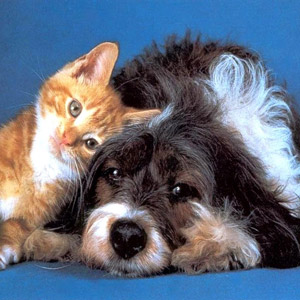
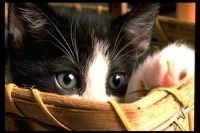
Category:
unusual things
0
comments
Subscribe to:
Posts (Atom)